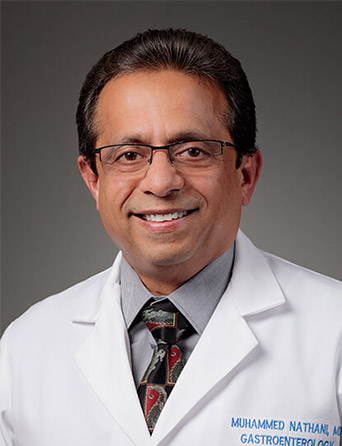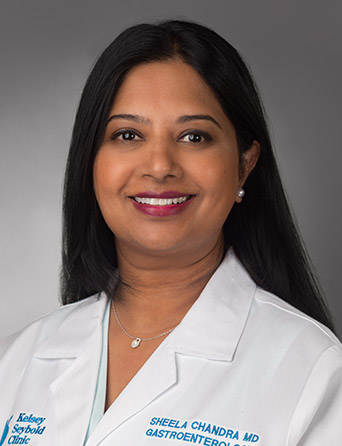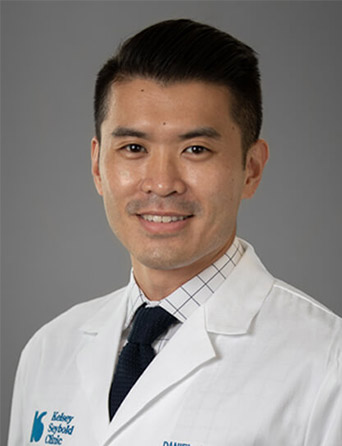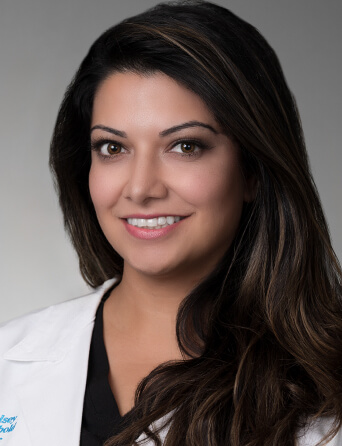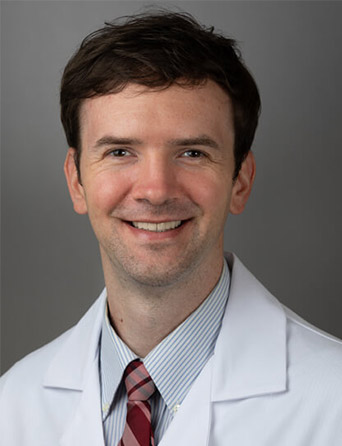Join Our eNewsletter!
Subscribe to our monthly newsletter to receive encouraging advice to help you lead a healthy lifestyle.

What You Should Know About Endoscopy
An endoscopy is usually recommended by a gastroenterologist when a visual evaluation will help diagnose and treat symptoms associated with abdominal pain, nausea, vomiting, difficulty swallowing, gastroesophageal reflux, unexplained weight loss, anemia, and gastrointestinal bleeding.
With this procedure, a doctor can see the inside lining of your digestive tract to detect and diagnose gastric ulcers, abnormal growths, pre-cancerous conditions, bowel obstructions, inflammation, and hiatal hernias.
An endoscopy is performed with a lighted, flexible tube (called an endoscope) that allows the doctor to get a clear, unobstructed view of the esophagus, stomach, and duodenum. It’s more accurate than an X-ray for detecting inflammations and smaller abnormalities such as ulcers and tumors.
“The extended capabilities of the endoscopy have dramatically reduced the need for transfusions and many surgeries,” says Dr. Muhammed Nathani, Associate Chief of Gastroenterology at Kelsey-Seybold. “An endoscopy can also be used to perform certain treatments and tasks, such as removing polyps, treating bleeding ulcers, and obtaining tissue samples for further examinations.”
How Is an Endoscopic Procedure Performed?
“At Kelsey-Seybold Clinic, an endoscopic procedure is usually conducted on an outpatient basis at our Ambulatory Surgery Center or in a hospital,” says Dr. Nathani. “While patients are usually semi-conscious throughout the process, a local anesthetic is administered to numb the throat and relax the gag reflexes. Sedatives are usually given to help patients remain comfortable and calm.”
Patients typically lie on their side or back while the tube is gently inserted down the esophagus and into the stomach. Air is passed through the tube to inflate the upper intestinal area. This process allows the small video camera to transmit images for the gastroenterologist to view. Special tools may also be inserted through the tube for performing various other tasks.
How to Prepare for an Endoscopy
Before a gastroenterologist can perform an endoscopy, the upper GI tract must be clear. This means a patient must fast for at least four to six hours before the procedure. Other restrictions will include abstaining from smoking, chewing gum, and many medications.
Dr. Nathani said an overnight stay isn’t necessary, but patients are still expected to be accompanied by someone who can drive them home and care for them afterward. “This is because the sedation will have residual effects for several hours after the procedure is finished,” he explains.
How Long Does Recovery Take?
After the procedure, patients will rest in a recovery room for 30 minutes to an hour while the immediate effects of the sedative wear off. Patients may experience some nausea and a bloated sensation from excess air remaining in the stomach.
“A sore throat also is a typical side effect that may last for up to two days,” says Dr. Nathani. “Plans should be made to take the entire day off for resting. Unless otherwise directed, a patient should be able to resume their normal diet and other activities the following day.”
The visual results from the endoscopy are immediately available following the procedure and shared with the patient. Since a biopsy requires a microscopic examination of the tissue sample, results will take up to a few days to complete.
What Are the Risks?
There are risks associated with any medical procedure. While complications are minimal and rare, risks include abnormal reactions to the sedatives, bleeding from a biopsy site, and accidental punctures inside the upper GI tract.
Potential complications can include swallowing difficulties, abdominal pain, vomiting, and fever. Should any of these situations arise following a procedure, patients should immediately contact their physician.
What Are the Benefits?
Because of its accuracy and minimally invasive nature, the benefits of an upper endoscopy provide doctors with superior detection and diagnostic abilities that previously required complex surgeries. Individuals suffering from gastrointestinal ailments can now receive specific life-saving treatments without significant interruptions in their lives.
Anyone who is suffering from prolonged abdominal pain, or has other concerns, should see their physician about the benefits of an upper endoscopy procedure.

